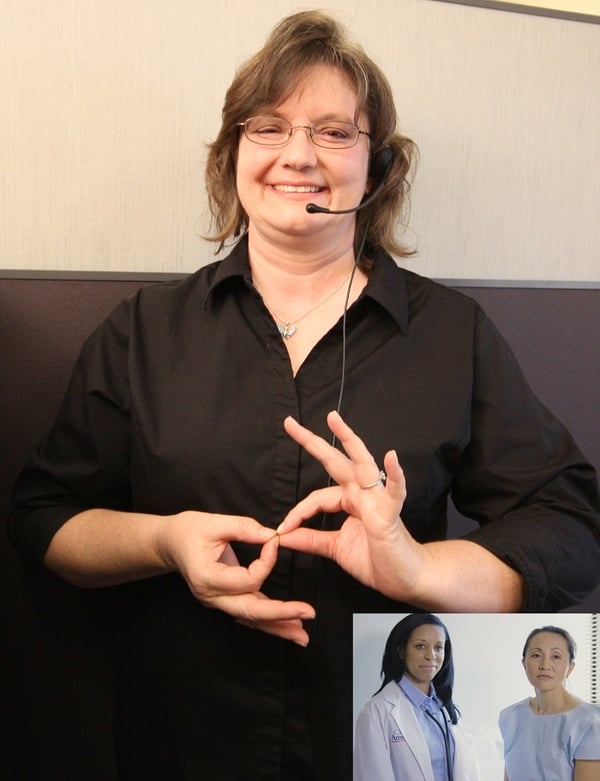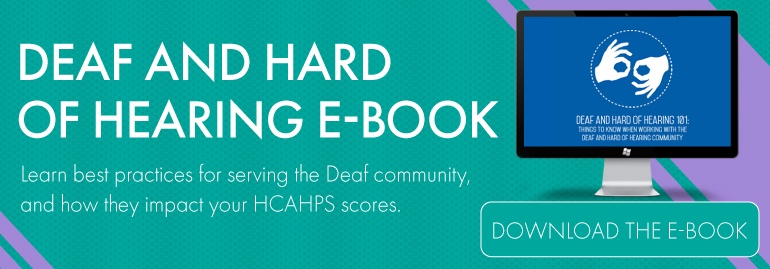
Medical providers continue to struggle with meeting the needs of patients who are deaf and hard of hearing. A recently-settled lawsuit brought by the Florida Association of the Deaf against a major hospital highlights the importance of providing quality care to those without hearing.
Here are three issues raised in the lawsuit regarding video interpretation, as well as potential solutions to help medical providers avoid facing similar legal challenges:
Issue:
The lawsuit claimed the hospital’s video interpretation services were often blurry and hard to distinguish. That’s an issue for video interpretation in any language, but it’s particularly problematic for American Sign Language, as it’s exclusively visual. The suit also alleged that the hospital’s video interpretation system frequently crashed.
If true, these challenges could put the hospital out of compliance with Section 1557 of the Affordable Care Act. The ACA recognizes video interpretation as a valid method, but states a solution must include:
“Real-time, full-motion video and audio over a dedicated high-speed, wide-bandwidth video connection or wireless connection that delivers high-quality video images that do not produce lags, choppy, blurry, or grainy images, or irregular pauses in communication.”
Solution:
Partner with a language services provider that offers reliable service and access channels. Perform test video calls before signing a contract to ensure potential vendors can deliver on their promises. And make sure your language services partner provides dedicated implementation support; many connectivity issues can be avoided by properly integrating the video interpretation solution into a hospital’s existing network.
*
Issue:
Plaintiffs in the suit alleged that hospital staff was unfamiliar with how to use video interpretation on the equipment provided; one recounted waiting 45 minutes for staff to get video interpretation working.
This too would put the hospital out of favor with Section 1557, which requires “adequate training to users of the technology and other involved individuals so that they may quickly and efficiently set up and operate the [video interpretation].”
Solution:
Handing staff a new tool like video interpretation without proper training will likely result in poor outcomes. Instead, make sure to incorporate the proper use of video interpretation screens/carts/ tablets into training for new hires, as well as annual refreshers for existing staff.
A quality language services partner like CyraCom can help by providing training materials and best practices and potentially providing an in-person implementation specialist to help train your staff on using the solution effectively. Our video interpretation app connects your staff to interpreters in just three touches, making the process easy to learn.
*
Issue:
The lawsuit alleged that hospital staff used video interpretation in circumstances where it wasn’t a good fit – with patients immobilized on their backs and during childbirth, for example.
Solution:
Establish a hospital-wide policy on when it’s appropriate to use video interpretation. Most providers don’t staff on-site ASL interpreters 24/7, and it’s not uncommon to wait up to two hours for one to arrive from off-site. So most ASL interactions will likely begin with a video interpreter as the best immediately-available option. From there, staff should be trained to determine whether the encounter should continue via video, or whether to call for an on-site interpreter.
Factors to Consider:
- Is the patient mobile? Can they sit up to look at a screen, and do they have full use of their hands and arms to sign? These obstacles will challenge both video and on-site interpreters, but an on-site interpreter may be better-equipped to reposition themselves.
Choosing a language services provider whose video carts and stands offer greater mobility can expand the scenarios where video interpretation is practical
- Is the patient experiencing a critical medical event? Some patients strongly prefer an on-site interpreter when receiving serious health-related news.
- Is the patient a lucid adult? Small children and patients struggling with mental health may find it difficult to grasp that the person on the screen is their interpreter.
Video interpretation has proved to be a valuable tool for providers treating non-English speaking patients, as well as those who are deaf and hard of hearing. It saves time, money, and makes interpreters accessible on-demand. Providers can ensure this option remains compliant and acceptable to patients by following these best practices, and by partnering with a language services provider who is willing and able to provide clear, quality service and the implementation support needed to maximize its effectiveness.
Learn more about caring for patients who are deaf or hard of hearing in our whitepaper:










